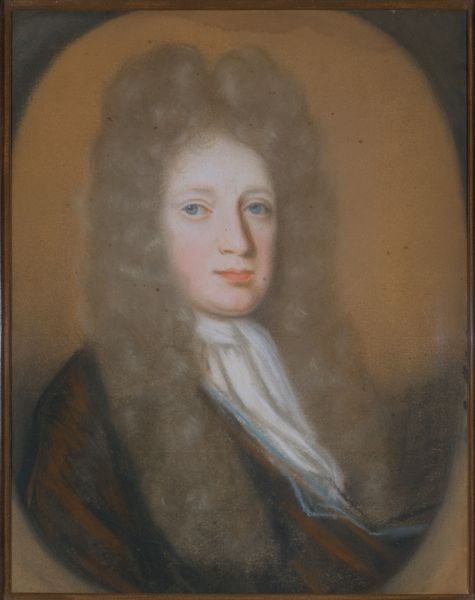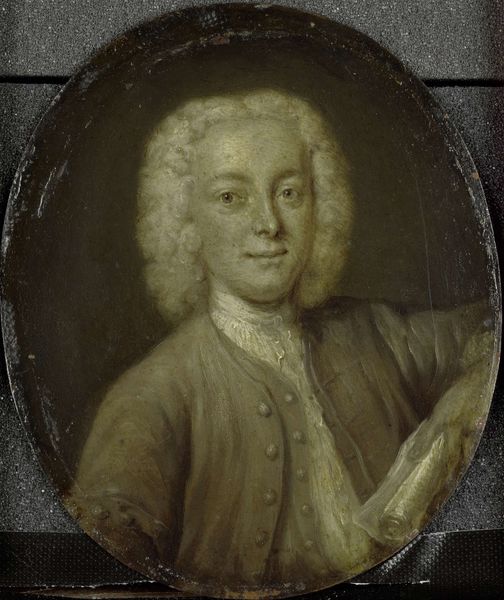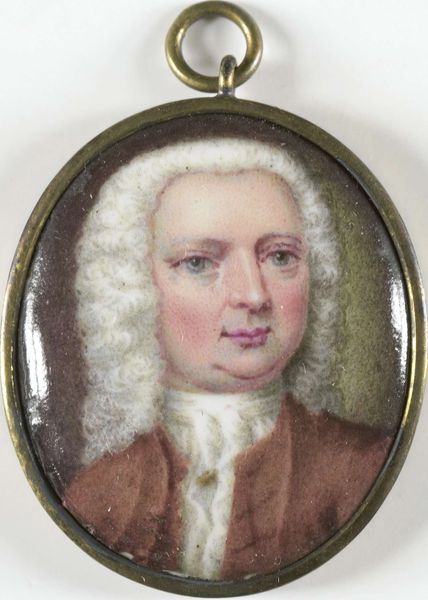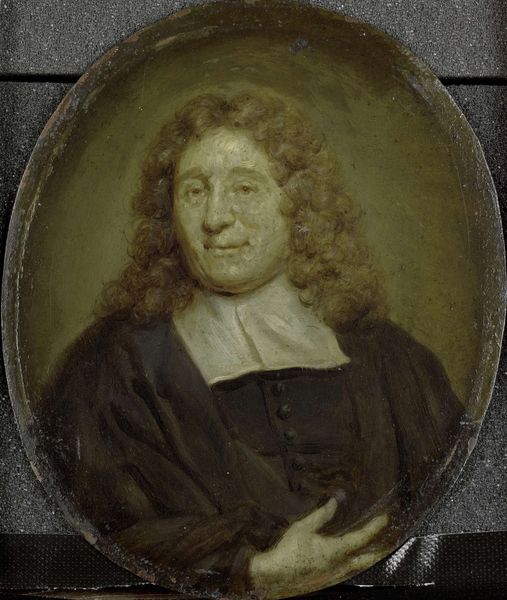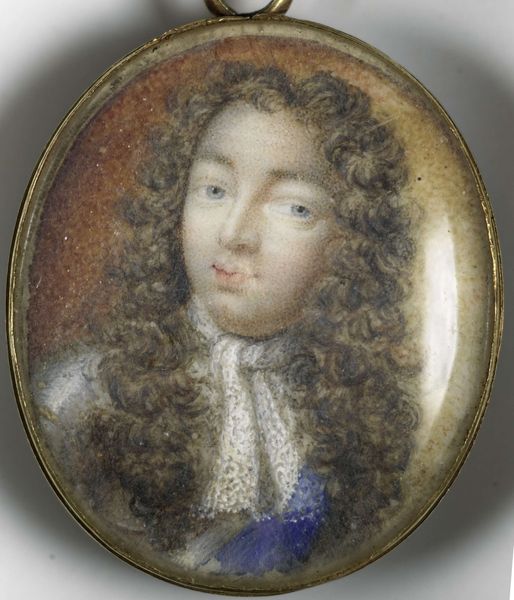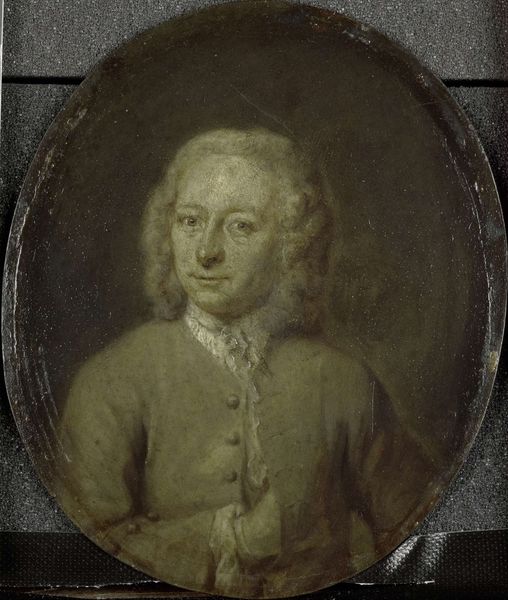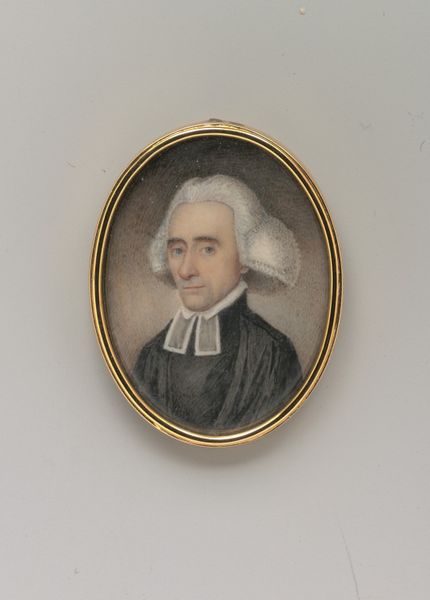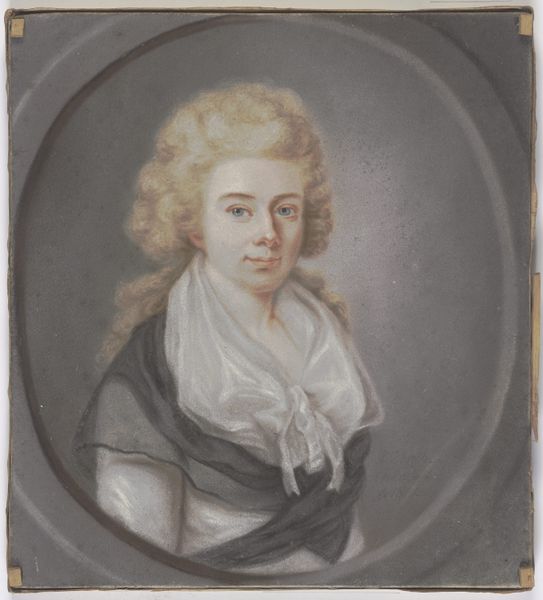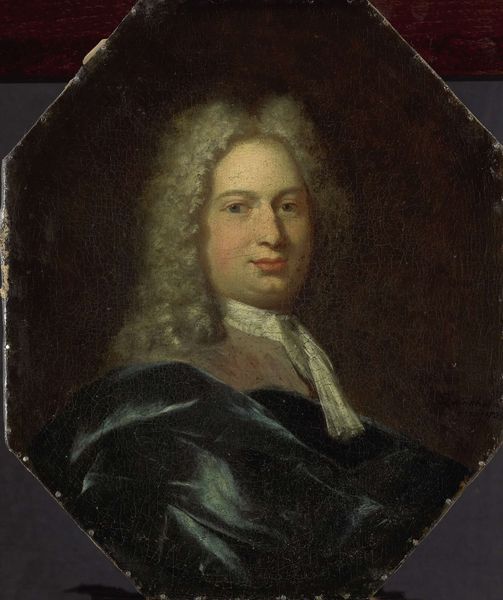
painting, watercolor
#
baroque
#
painting
#
oil painting
#
watercolor
#
portrait reference
#
genre-painting
#
miniature
#
watercolor
Dimensions: 6.7 cm (height) x 5.4 cm (width) (Netto)
Editor: This is "En gejstlig," or "A Clergyman," a miniature painting dating from the first half of the 18th century. It's an oil and watercolor work displayed in a small, oval gilded frame. What strikes me most is the subject's calm, almost placid expression. What can you tell me about this portrait? Curator: Notice the clergyman's collar. Its stark white contrasting against the black robes serves as a visual symbol, immediately signifying his dedication to faith, a symbolic cleansing of the soul if you will. It also speaks to a societal role, a mediator between the divine and the earthly. The wig, similarly, is a signifier. How do you see the wig functioning in terms of status? Editor: Well, it indicates wealth and belonging to a specific social class, I assume? Curator: Precisely! It broadcasts worldly status even as the clerical collar whispers of spiritual commitment. Consider also the Baroque era's fascination with ornamentation; the elaborate wig reflects the period's emphasis on outward appearance as an expression of inner status or grace. In this image we see an early form of "code-switching", today this means something very different from just class identity, right? Editor: Yes, it makes sense when you break it down that way. I guess I hadn't really considered all the visual cues that create such a strong statement about identity and role. Curator: It is a study in symbolic layers, isn't it? The calm expression you noted contrasts sharply with the performative aspects of dress. What tensions might that create, culturally and personally? Editor: I guess the tension would be between humility and worldly power or status? I see it differently now; I had missed the symbolic meaning until you pointed it out. Thanks. Curator: The pleasure is all mine!
Comments
No comments
Be the first to comment and join the conversation on the ultimate creative platform.

